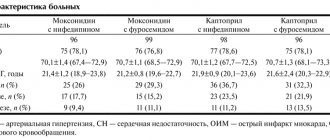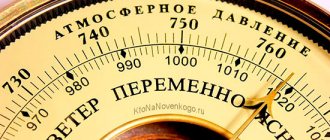Updated July 20, 2021 492 Author: Dmitry Petrov
Hello, dear readers of the KtoNaNovenkogo.ru blog.
Cyclones and anticyclones are moving atmospheric vortices that move gigantic volumes of air masses and determine the nature of the weather over vast areas.
Their sizes are colossal: up to 3 thousand km in diameter and up to 16 km in height.
These powerful atmospheric formations have a similar formation mechanism, but in essence they are antipodes (this can be seen even by their name). Let's look at both of these phenomena in more detail.
What is atmospheric pressure?
Atmospheric pressure is the pressure of the gaseous shell of our planet, the atmosphere, which acts on all objects in it, as well as the earth's surface. Pressure corresponds to the force that acts in the atmosphere per unit area.
Earth's atmosphere (photo from the ISS)
In simpler terms, this is the force with which the air around us acts on the surface of the earth and objects. By monitoring changes in atmospheric pressure, it is possible, in conjunction with other factors, to predict weather conditions.
Why and due to what is atmospheric pressure created?
Specialists who study the Earth's atmosphere and various meteorological phenomena carefully monitor how air masses move. This is the main factor influencing the climatic conditions of a particular area. These observations made it possible to understand why atmospheric pressure arises.
It's all because of gravity. Through many experiments it has been proven that air is by no means weightless. It consists of various gases that have a certain weight. Thus, the force of gravity of the Earth acts on the air, which contributes to the formation of pressure.
Interesting fact : all the air on the planet (or the entire atmosphere of the Earth) weighs 51 x 1014 tons.
The air mass around the globe is not the same. The level of atmospheric pressure fluctuates accordingly. Areas with more air mass experience higher pressure. If there is less air (it is also called rarefied in such cases), then the pressure is lower.
Movement Sun
Why does the weight of the atmosphere change? The secret of this phenomenon lies in the heating of air masses. The fact is that the heating of the air does not occur at all from the sun's rays, but due to the earth's surface.
Near it, the air heats up and, becoming lighter, rises. At this time, the cooled flows become heavier and fall down. This process occurs continuously. Each air flow has its own pressure, and its difference causes wind.
Names of vortices
In the middle of the last century, anticyclones and cyclones began to be given names: this turned out to be much more convenient when exchanging information about hurricanes and cyclone movements in the atmosphere, since it made it possible to avoid confusion and reduce the number of errors. Behind each name of a cyclone and anticyclone there was hidden data about the vortex, down to its coordinates in the lower layer of the atmosphere.
Before making a final decision on the name of this or that cyclone and anticyclone, a sufficient number of proposals were considered: they were proposed to be designated by numbers, letters of the alphabets, names of birds, animals, etc. This turned out to be so convenient and effective that after a while Over time, all cyclones and anticyclones received names (at first they were female, and in the late seventies tropical vortices began to be called by male names).
Since 2002, a service has appeared that offers anyone who wants to name a cyclone or anticyclone by their name. The pleasure is not cheap: the standard price for a cyclone to be named after a customer is 199 euros, and an anticyclone costs 299 euros, since anticyclones occur less frequently.
How does the composition of the atmosphere affect pressure?
The atmosphere contains a huge amount of gases. These are mainly nitrogen and oxygen (98%). There is also carbon dioxide, neon, argon, etc. The atmosphere begins with a boundary layer 1-2 km thick and ends with the exosphere at an altitude of about 10,000 km, where it smoothly passes into interplanetary space.
Atmospheric composition
The composition of the atmosphere affects pressure due to density. Each component has its own density. The higher the altitude, the thinner the layer of the atmosphere and the lower its density. The pressure decreases accordingly.
Normal atmospheric pressure for humans
Normal atmospheric pressure is 760 mmHg or 101,325 Pa at 0℃ at sea level (45º latitude). At the same time, the atmosphere acts on every square centimeter of the earth's surface with a force of 1.033 kg. A column of mercury 760 mm high balances the mass of this air column.
The figure of 760 mm was also determined by Torricelli during the experiment. He also noticed that when a flask is filled with mercury, there is a void at the top. Subsequently, this phenomenon was called the “Torricelli void.” Then the scientist did not yet know that during his experiment he created a vacuum - that is, a space free from any substances.
At a standard pressure of 760 mmHg a person feels most comfortable. If we take into account the previous data, then the air presses on a person with a force of about 16 tons. Why then do we not feel this pressure?
The fact is that there is also pressure inside the body. Not only people, but also representatives of the animal world have adapted to atmospheric pressure. Each organ was formed and developed under the influence of this force. When the atmosphere acts on a body, this force is distributed evenly over the entire surface. Thus, the pressure is balanced and we do not feel it.
Atmospheric pressure map of Russia
The atmospheric pressure norm should not be confused with the climate norm. Each region has its own standards for a certain time of year. For example, residents of Vladivostok are lucky, since the average annual atmospheric pressure there is almost equal to the norm - 761 mm Hg.
And in settlements located in mountainous areas (for example, in Tibet), the pressure is much lower - 413 mm Hg. This is due to the altitude of about 5000 m.
Increase and decrease in pressure
When the pressure exceeds 760 mm. Hg Art., it is called elevated, and when the indicator is less than normal - reduced.
Several changes in atmospheric pressure occur within 24 hours. In the morning and evening it increases, and after 12 noon and night it decreases. This happens due to the fact that the air temperature changes and, accordingly, its flows move.
During the winter period, the highest atmospheric pressure is observed over the mainland of the Earth, because the air has a low temperature and is highly dense. In summer, the opposite situation is observed - minimal pressure is observed.
On a more global scale, pressure levels also depend on temperature. The Earth's surface heats up unevenly: the planet has a geoid (rather than perfectly round) shape and revolves around the Sun. Some zones heat up more, others less. Because of this, atmospheric pressure is distributed zonally over the surface of the planet.
Atmospheric pressure belts
Scientists identify 3 belts where low pressure predominates and 4 belts with predominant highs. The equator area warms up the most, so light warm air rises, and low pressure forms at the surface.
Near the poles, the opposite is true: cold air sinks, so there is high pressure. If you look at the diagram of pressure distribution over the surface of the planet, you will notice that the belts of minimums and maximums alternate.
In addition, you need to remember about the uneven heating of both hemispheres of the Earth throughout the year. This leads to a certain displacement of the low and high pressure belts. In summer they move northwards, and in winter – southwards.
What is a tornado?
A tornado is the same as a tornado and a meso-hurricane. This is the name of an atmospheric vortex that forms in a thundercloud and gradually descends. The exact reason for the formation of tornadoes is still unknown, because it is very difficult to study such a deadly element. But there is a rough description of the causes of tornadoes.
The color of a tornado depends on many factors: for example, if the sun is behind, the tornado appears dark and most ominous
Impact on humans
Atmospheric pressure has a serious impact on the human body. This is quite natural, if we take into account all of the above regarding the force with which the air presses on our body and the resistance provided.
How changes in weather affect people
There is a concept of meteorological dependence, confirmed by science and medicine. Meteopaths are people whose body reacts to even minimal pressure deviations from the norm. These also include people with certain chronic diseases (in particular cardiovascular, nervous system, etc.).
In general, the human body can adapt to changing climatic conditions. For example, when traveling to a country with completely different weather conditions, it may take several days to acclimatize.
Significant deviations from the norm will be noticeable for absolutely any person. This includes both high and low blood pressure.
In ordinary life, an increase in atmospheric pressure to a critical level, at which a person’s well-being deteriorates, does not occur (with the exception of the above-mentioned weather-dependent and chronically ill people). You can feel its effect, for example, when diving to great depths.
Low and high blood pressure
Cyclone
A cyclone is a huge mass of air that rotates in the form of a vortex around a vertical axis with a diameter of up to several thousand kilometers. At the center of this vortex there is low pressure.
Cyclones
In the Northern Hemisphere, the atmospheric vortex of a cyclone rotates counterclockwise, in the Southern Hemisphere it rotates clockwise. Cyclones occur regularly, since their formation is directly related to the rotation of the Earth. There are no cyclones near the equator.
There are two types of cyclones:
- Tropical. They occur in tropical latitudes and are relatively small in size. However, they are characterized by enormous, destructive wind power.
- Extratropical. Formed in polar and temperate latitudes. They reach several thousand kilometers in diameter.
Interesting fact : in tropical cyclones, the “eye of the storm” is often observed - this is an area of about 20 km in size in the very center of the vortex, in which clear and calm weather remains.
The main distinguishing features of a cyclone are colossal energy, which manifests itself in the form of strong winds, storms, thunderstorms, squalls, and precipitation. Powerful tropical cyclones are given unique names or names, for example, Katrina (2005), Nina (1975), Dorian (2019).
Time in Antananarivo, Madagascar now
Such a cyclone as a whole (or its center) has a forward motion and often causes great excitement, much greater than in the most severe storms of temperate latitudes.
The speed of a tropical cyclone varies from 70 to 240 miles per day, increasing with increasing latitude. Atmospheric pressure in a tropical cyclone decreases from the periphery to the center to 950-970 mb,
and in some cases it drops even lower, while the wind speed, on the contrary, increases and near the central zone of the tropical cyclone reaches its highest values, equal to 40-60
m/sec
or even more. However, in the very central zone of the tropical cyclone, 20 to 30 miles in diameter, winds weaken to calm.
The passage of a tropical cyclone is always accompanied by heavy clouds, very heavy and prolonged downpours and significant waves. In the central zone of a tropical cyclone (the "eye of the storm") the sky is usually clear or covered with thin altostratus clouds; The excitement here takes on the character of a strong crush. posing a great danger to the ship. Tropical cyclones occur in all oceans.
The main centers of origin and their local names are as follows:
· Caribbean Sea and Gulf of Mexico. The cyclones that arise here are called Antillean hurricanes
· Philippine Islands region, South China Sea, tropical cyclones are called typhoons
· Arabian Sea and Bay of Bengal, where tropical cyclones have no local name
· Indian Ocean off the coast of Australia. Here tropical cyclones are called "willy-willy"
· in the Pacific Ocean off the west coast of Mexico - cordonazo
· in the Philippines - baguyo, or baruyo
· In the southern Indian Ocean, east of the island of Madagascar. The local name for tropical cyclones is “orcans”.
Tropical cyclones often originate in the open ocean, usually between 5 and 20° latitude, at the boundaries of the zone of prevailing light winds and calms and in monsoon areas. At the first stage of their movement, tropical cyclones move at a low speed of 10-20 km/h to the west, then the speed increases to 30-40 km/h or more.
Then, increasingly deviating to the right in the northern hemisphere and to the left in the southern hemisphere, they begin to move to the northwest and southwest, respectively. Having reached the border of the trade wind zone, i.e., approximately 15-30 °, northern and southern latitude, tropical cyclones, if they have not yet filled by this time, change the direction of movement and begin to move to the northeast in the northern hemisphere and to the south -east in south. Some tropical cyclones, however, do not change direction but continue to move in a northwest or southwest direction until they reach the mainland. As it enters temperate latitudes, the cyclone gradually fills and slows down its movement. But when a cyclone penetrates into a system of colder air (into the region of the polar front), it transforms: it deepens, its speed increases (sometimes up to 60 km/h), the zone of storm winds expands, etc. And as an extratropical vortex, it can shift at fairly high latitudes. As the tropical cyclone enters the continent, it quickly weakens and dies out. Tropical cyclones are most often observed in the northern hemisphere from August to September, and in the southern hemisphere in the Pacific Ocean - from January to July, in the Indian Ocean - from November to April. The exception is the northern Indian Ocean, where tropical cyclones are more common from May to December.
Anticyclone
An anticyclone is not only the opposite of a cyclone. This phenomenon has a different mechanism of occurrence. The wind in both hemispheres of the Earth moves in the opposite direction compared to the cyclone.
Anticyclone
An anticyclone is an area of high pressure. It is characterized by closed isobars - these are lines that mark places with the same atmospheric pressure.
An anticyclone brings stable weather conditions corresponding to the time of year. In summer it is windless, hot weather, in winter it is frosty. Characterized by few or no clouds.
Anticyclones form in certain areas. For example, most often they occur over large bodies of ice: in Antarctica, Greenland, and the Arctic. Also found in the tropics.
Anticyclones also carry danger and unpleasant consequences. They can contribute to fires and prolonged droughts. When there is no wind for a long time in large cities, harmful substances and gases accumulate, which is especially acute for people with respiratory diseases.
Difference between cyclone and anticyclone
Interesting fact : there are blocking cyclones that form over a certain area and do not move anywhere. At the same time, they do not allow other air masses to pass through. Usually they last no longer than 5 days, but regularly in the European part of Russia anticyclones last for about a month. The last time this happened was in 2015. The result is heat, drought, forest fires.
Atmospheric vortices
In the troposphere, the lowest layer of the Earth's atmosphere, vortices constantly appear, develop and disappear. Some of them are so small and unnoticeable that they pass by our attention, others are so large-scale and have such a strong influence on the Earth’s climate that they cannot be ignored (primarily this applies to cyclones and anticyclones).
Cyclones are areas of low pressure in the Earth's atmosphere, in the center of which the pressure is much lower than at the periphery. An anticyclone, on the contrary, is an area of high pressure that reaches its highest levels in the center. While over the northern hemisphere, cyclones move counterclockwise and, obeying the Coriolis force, try to move to the right. While the anticyclone moves clockwise in the atmosphere and deviates to the left (in the Southern Hemisphere of the Earth everything happens the other way around).
Despite the fact that cyclones and anticyclones are absolutely opposite vortices in their essence, they are strongly interconnected with each other: when pressure decreases in one region of the Earth, its increase is necessarily recorded in another. Also, cyclones and anticyclones have a common mechanism that causes air currents to move: non-uniform heating of different parts of the surface and the rotation of our planet around its axis.
Secrets of the Bermuda Triangle122684.3893
Cyclones are characterized by cloudy, rainy weather with strong gusts of wind that arise due to the difference in atmospheric pressure between the center of the cyclone and its edges. An anticyclone, on the contrary, in the summer is characterized by hot, windless, partly cloudy weather with very little precipitation, while in the winter, thanks to it, clear but very cold weather sets in.
How does atmospheric pressure change with altitude? Formula, graph
Atmospheric pressure directly depends on altitude. The higher, the lower the pressure and vice versa. If you rise 12 m above sea level, the mercury in the barometer will decrease by 1 mm.
Pressure is often displayed in hectopascals instead of mmHg. Art.: 1 mm = 133.3 Pa = 1.333 hPa. You can show the relationship between height and pressure using a simple formula:
∆h/∆P=12 m/mm Hg. st or ∆h/∆P=9 m/hPa,
where ∆h is the change in height, ∆P is the change in pressure.
Thus, with an increase of 9 meters, the pressure level decreases by 1 hPa. This indicator is called the pressure level. The standard atmospheric pressure is 1013 hPa (can be rounded to 1000).
How can you use this data to calculate the change in pressure at a different altitude? For example, when rising 90 m, the pressure will decrease by 10 hPa. In this case, it turns out that when you rise to 900 m, the pressure will drop to 0.
But the air density also changes with altitude, therefore, when it comes to longer distances (starting from 1.5-2 km), all calculations must be carried out taking this indicator into account.
Height versus pressure graph
A graph of changes in atmospheric pressure with altitude clearly displays all of the above. It takes on the appearance of a curved line rather than a straight line. Due to the fact that the density of the atmosphere is not the same, with increasing altitude the pressure begins to decrease more and more slowly. However, it will never reach zero because there is some matter everywhere - there is no vacuum in the Universe.
Vortexes of tropical latitudes
In the 1970s, tropical cyclone Bhola hit Bangladesh. Although the wind speed and strength were low and it was assigned only the third (out of five) hurricane category, due to the huge amount of precipitation that fell on the ground, the Ganges River overflowed its banks and flooded almost all the islands, washing away all settlements from the face of the earth.
The consequences were catastrophic: during the rampant disaster, from three hundred to five hundred thousand people died.
A tropical cyclone is much more dangerous than a vortex from temperate latitudes: it forms where the temperature of the ocean surface is not lower than 26°, and the difference between air temperatures exceeds two degrees, as a result of which evaporation increases, air humidity increases, which contributes to the vertical rise of air masses.
Thus, a very strong draft appears, capturing new volumes of air that have heated up and gained moisture above the ocean surface. The rotation of our planet around its axis gives the rise of air the vortex-like movement of a cyclone, which begins to rotate at enormous speed, often transforming into hurricanes of terrifying force.
A tropical cyclone is formed only over the ocean surface between 5-20 degrees north and south latitudes, and once on land, it fades out quite quickly. Its dimensions are usually small: the diameter rarely exceeds 250 km, but the pressure at the center of the cyclone is extremely low (the lower, the faster the wind moves, so the movement of cyclones is usually from 10 to 30 m/s, and wind gusts exceed 100 m/s) . Naturally, not every tropical cyclone brings death with it.
There are four types of this vortex:
- Disturbance – moves at a speed not exceeding 17 m/s;
- Depression - the movement of the cyclone is from 17 to 20 m/s;
- Storm - the center of the cyclone moves at a speed of up to 38 m/s;
- Hurricane - a tropical cyclone moves at a speed exceeding 39 m/s.
The center of this type of cyclone is characterized by a phenomenon called the “eye of the storm” - an area of calm weather. Its diameter is usually about 30 km, but if a tropical cyclone is destructive, it can reach up to seventy. Inside the eye of the storm, the air masses have a warmer temperature and less humidity than in the rest of the vortex.
Calm often reigns here; at the border, precipitation abruptly stops, the sky clears, the wind weakens, thereby deceiving people who, deciding that the danger has passed, relax and forget about precautions. Since a tropical cyclone always moves from the ocean, it drives huge waves in front of it, which, when they hit the coast, sweep everything out of the way.
Scientists are increasingly recording the fact that every year the tropical cyclone becomes more dangerous and its activity is constantly increasing (this is due to global warming). Therefore, these cyclones are found not only in tropical latitudes, but also reach Europe at an atypical time of year for them: they usually form in late summer/early autumn and never occur in spring.
Thus, in December 1999, France, Switzerland, Germany, and the UK were hit by Hurricane Lothar, so powerful that meteorologists could not even predict its appearance due to the fact that the sensors either went off scale or did not work. “Lotar” turned out to be the cause of the death of more than seventy people (they were mainly victims of road accidents and falling trees), and in Germany alone, about 40 thousand hectares of forest were destroyed in a few minutes.
Atmospheric pressure in the mountains
In the mountains the pressure will be lower in any case. How a person feels depends on the altitude, as well as additional conditions. For example, with normal humidity, an ascent of 3000 m can cause weakness and decreased performance. This is due to a lack of oxygen.
In a humid climate, similar sensations arise already at an altitude of 1000 m. The fact is that water molecules displace oxygen molecules - there is less of it in humid air. And in a dry climate you can climb to 5000 m with almost no problems.
Pressure decreases with altitude
Different heights and their effects:
- 5 km - feeling of lack of oxygen.
- 6 km is the maximum height at which permanent settlements are located.
- 8.9 km is the height of Everest. Water boils at a temperature of +68℃. Trained people can only stay at this level for a short time.
- 13.5 km - you can only be safe if you have pure oxygen. The maximum permissible height at which you can stay without special protection.
- 20 km is a height unacceptable for humans. Only if you are in a sealed cabin.
What is a tropical cyclone
From cyclones formed in temperate latitudes, cyclones that owe their origin to the tropics are separated. They have many names. These are hurricanes (West Indies), and typhoons (east Asia), and simply cyclones (Indian Ocean), and arcana (southern Indian Ocean). The sizes of such vortices range from 100 to 300 miles, and the diameter of the center is from 20 to 30 miles.
The wind here accelerates to 100 km/h, and this is typical for the entire vortex area, which fundamentally distinguishes them from cyclones formed in temperate latitudes. A sure sign of the approach of such a cyclone is ripples in the water. Moreover, it goes in the opposite direction to the blowing wind or the wind that blew shortly before.











